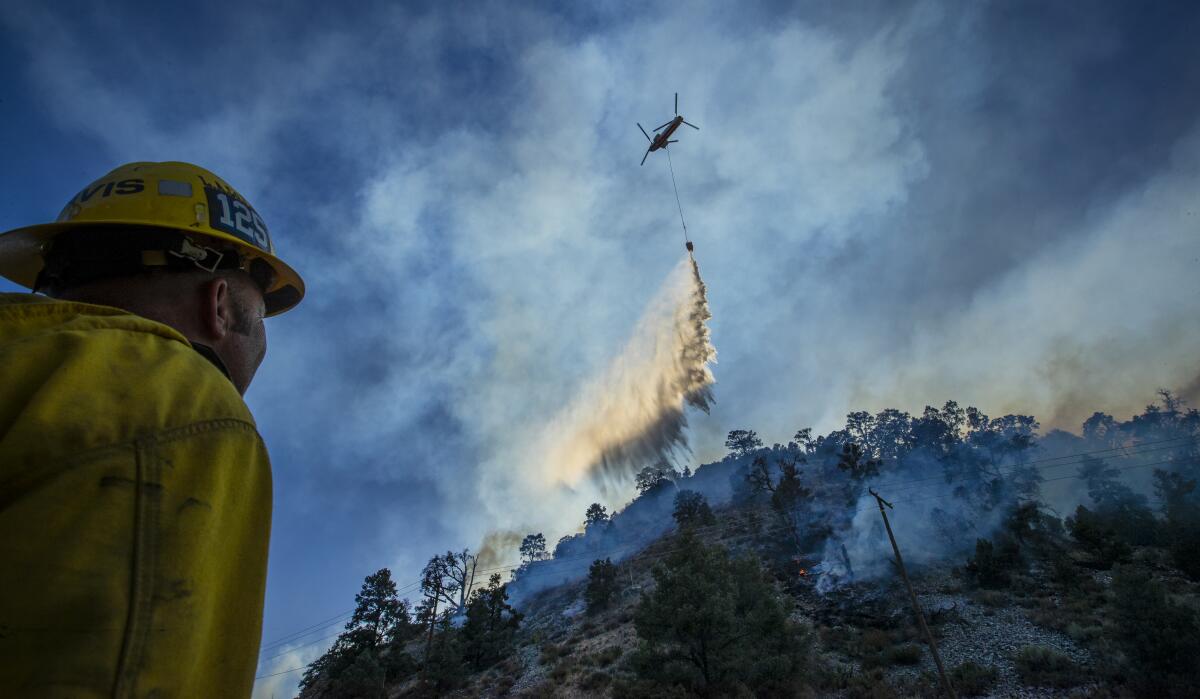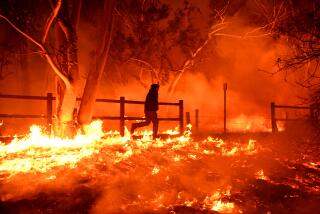Tree branches hitting power lines may have sparked Bobcat fire, utility says

- Share via
Tree branches may have come in contact with Southern California Edison equipment and sparked the Bobcat fire in the Angeles National Forest, according to a letter the utility sent to regulators on Monday.
As part of the U.S. Forest Service’s probe into the fire, investigators took a 23-foot-long line of conductor belonging to the utility, an “H-Frame structure” with two power poles and three tree branches, Edison wrote in its letter to the Public Utilities Commission.
Monday’s letter was a supplement to the utility’s Sept. 15 filing with the CPUC, where the company notified regulators that there was an “incident” on their grid in the same general area and around the same time as the beginning of the Bobcat fire.
The fire has scorched more than 115,000 acres between the San Gabriel and Antelope valleys and destroyed more than 80 homes since it began Sept. 6 near Cogswell Dam in the Angeles National Forest.
In its first filing regarding the incident, Edison said that the Bobcat fire was reported at 12:21 p.m. and that five minutes earlier, the company’s “Jarvis 12 kV circuit out of Dalton Substation experienced a relay operation,” indicating its equipment detected some kind of abnormal condition or event on the circuit.
However, the utility continued, cameras in the area showed smoke was already developing in the area before their grid “incident.”
While the Forest Service moves forward with its investigation, Edison officials said they will simultaneously conduct their own to determine “whether vegetation in the area could have been a factor, including whether vegetation may have encroached within the minimum clearance distance or contacted the section of the overhead conductor retained by USFS.
“SCE is also investigating the impact an active fire might have had on our circuit, and is investigating other potential causes of the ignition such as customer-owned electrical facilities and human activity in the area.”
In California, utilities can be found liable for wildfire damages their equipment contributes to, even if they’ve properly maintained it, under the state’s unique inverse-condemnation law.
More to Read
Sign up for Essential California
The most important California stories and recommendations in your inbox every morning.
You may occasionally receive promotional content from the Los Angeles Times.











